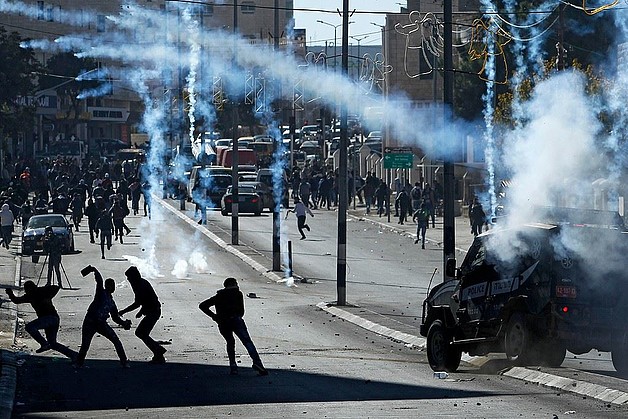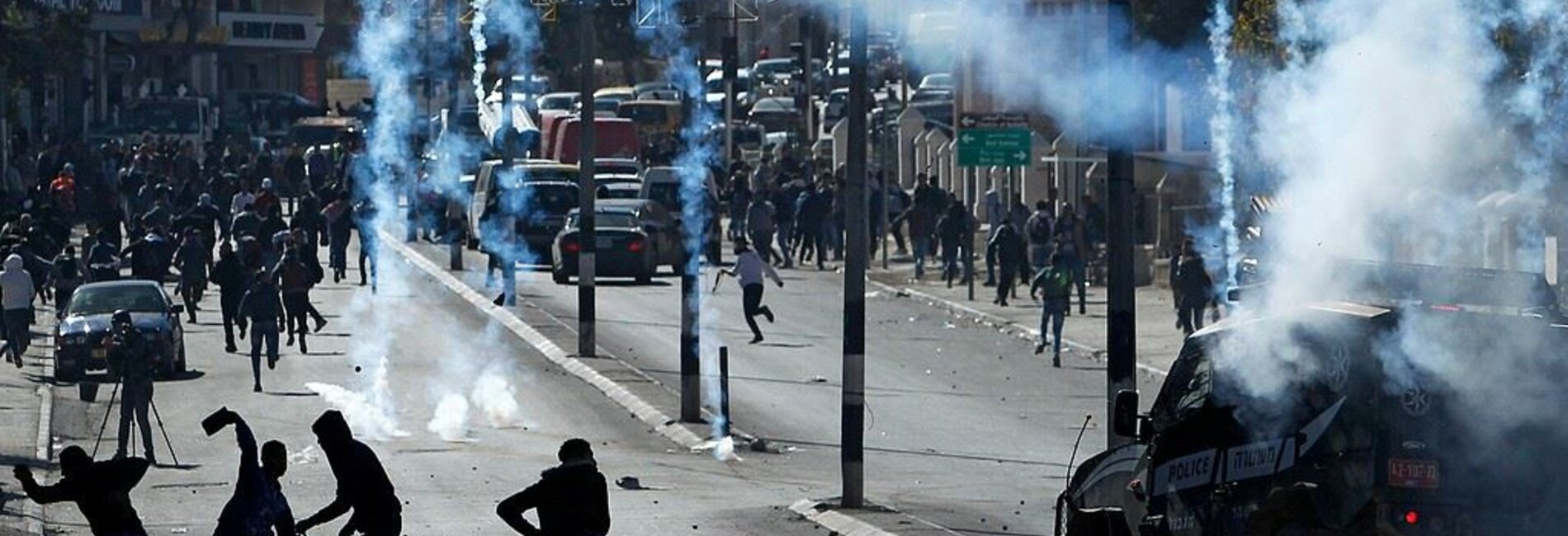Overview: December 2017
Since the announcement, on 6 December 2017, of the United States’ recognition of Jerusalem as the capital of Israel, widespread demonstrations by Palestinians have resulted in clashes with Israeli forces across the occupied Palestinian territory (OPT). In the West Bank, as of 31 December, three Palestinians have been killed and 3,590 injured. The majority of injuries (almost 70 per cent) were due to tear gas inhalation requiring medical treatment, followed by rubber bullets and live ammunition.

In the Gaza Strip, there have been regular demonstrations next to the perimeter fence, involving stone-throwing at Israeli forces deployed on the Israeli side, who have fired live ammunition, rubber bullets and tear gas canisters at protesters. Eleven Palestinians, of whom nine were civilians, have been killed by Israeli forces and 959 other civilians have been injured during these incidents. In response to the level of casualties in Gaza, the UN High Commissioner for Human Rights raised “serious concerns as to whether the force used by Israeli forces was properly calibrated to the threat.” Palestinian armed factions have also regularly fired rockets and mortars towards southern Israel, with a minority landing in Israel, resulting in limited property damage but no casualities. Following this, Israel has launched a series of airstrikes targeting military sites in Gaza, which have killed three Palestinians, including one civilian, and injured 21 others.
The escalation in Gaza is of particular concern given the deteriorating humanitarian situation there. An item in this month’s Humanitarian Bulletin describes how the exit of Palestinians in Gaza through the Israeli-controlled Erez crossing declined by almost 50 per cent in 2017 compared to 2016. The number of businesspeople who hold valid trader permits has declined by 85 per cent compared to late 2015. Those businesses affected employed a significant number of workers in the depressed Gaza economy; their inability to leave Gaza to meet professionally with their Israeli counterparts may force many to shut down entirely.
Palestinian access via Rafah, the Egyptian-controlled crossing also declined during the year, from an already extremely low level. On 1 November, as part of the Palestinian reconciliation agreement reached on 12 October, the Hamas authorities handed over control of the Gaza side of the Erez, Kerem Shalom and Rafah crossings to the Palestinian Authority (PA). However, this development has had no apparent impact on the volume of Palestinians crossing from Gaza through the Israeli- and Egyptian-controlled checkpoints.
The deterioration in access from Gaza must be seen in the context of the decade-long blockade, compounded by three devastating escalations of hostilities and the internal Palestinian divide, which in 2017 resulted in long power cuts, with significant impact on daily life and service provision for 2 million people. Since the 12 October signing of the intra-Palestinian reconciliation agreement, there has yet to be any significant improvement in the humanitarian situation. The Palestinian Authority’s decision in early January to resume payment for 50 megawatts of electricity purchased from Israel, reduced since June 2017, improved the humanitarian situation. However, this needs to be followed by additional steps to improve the humanitarian situation and prevent further de-stabilization.
Another item in this month’s Bulletin concerns the 2018 Humanitarian Needs Overview (HNO), which was completed in December 2017. About 2.5 million Palestinians across the OPT, or roughly half of the population, are in need of humanitarian assistance and protection, according to the HNO. Of those, 1.9 million, identified as the most vulnerable, will be targeted in 2018 by a range of interventions outlined in the Humanitarian Response Plan (HRP), for a total cost of US$ 539.7 million. The bulk of the financial requirements (75 per cent) will cover the provision of humanitarian assistance in Gaza.
The final item in this month’s Humanitarian Bulletin concerns the high levels of Palestinian demolitions in East Jerusalem, despite a reduction in the rest of the West Bank, which is one of a range of Israeli policies that creates a coercive environment for Palestinian residents of the city. In 2017, the Israeli authorities demolished 142 structures in East Jerusalem due to the lack of building permits, the second largest number of demolitions since 2000. In addition to demolitions implemented, the threats of demolition to homes and other structures continue. Recently, two instances of multiple demolition orders have been reported in two East Jerusalem localities affected by the Barrier, Kafr ‘Aqab and Sur Bahir.
The ongoing unrest throughout the OPT is a reminder of the sensitivity of the issue of Jerusalem: about 70 per cent of all Palestinian injuries in the OPT during 2017 occurred during protests and clashes, following developments related to Jerusalem – the installation of metal detectors at the entrance of the Haram ash Sharif/Temple Mount in July, and the recent announcement by the United States. In his most recent briefing to the Security Council, Special Coordinator Mladenov declared that “the United Nations maintains the view that Jerusalem is a final status issue that must be resolved through direct negotiations between the two parties on the basis of the relevant Security Council and General Assembly resolutions taking into account the legitimate concerns of both the Palestinian and the Israeli sides.”










